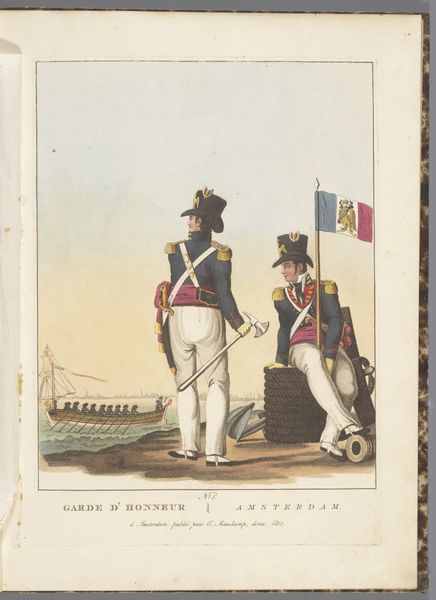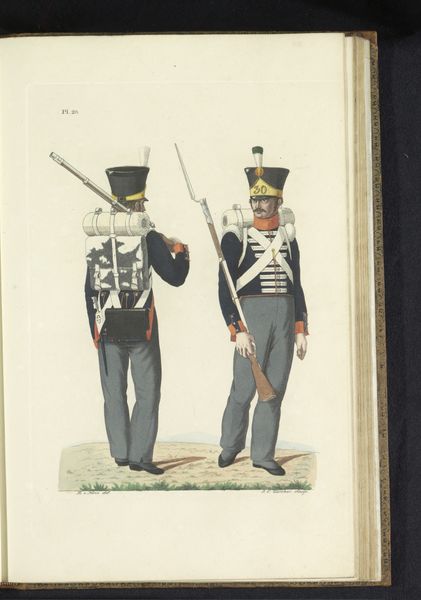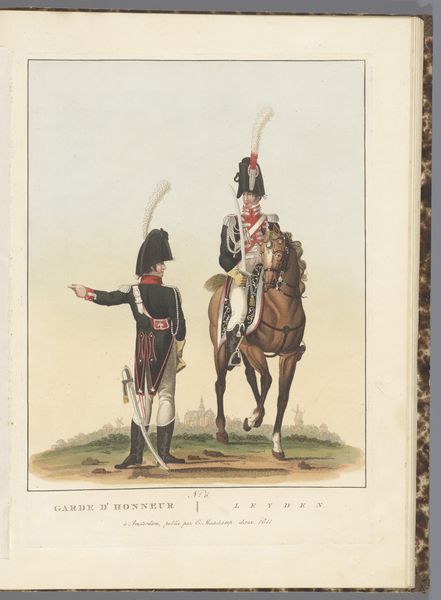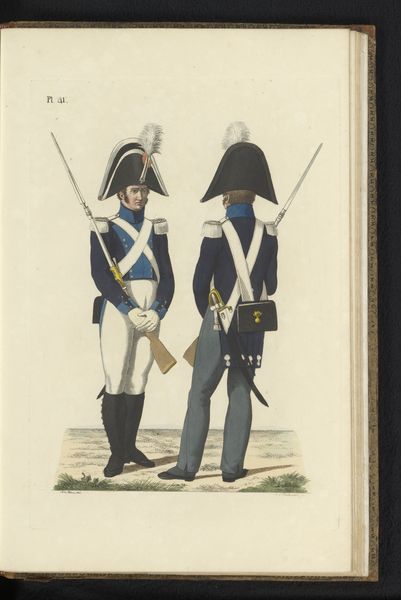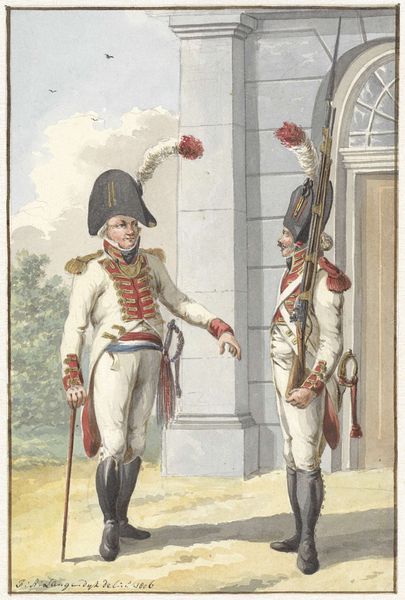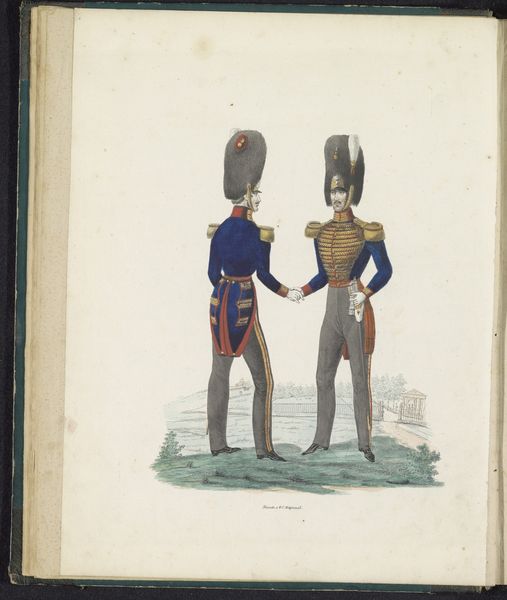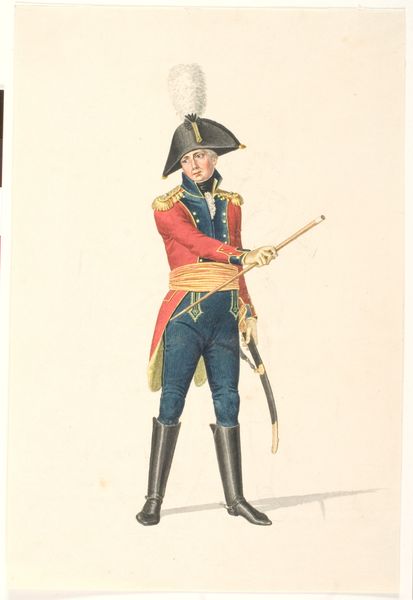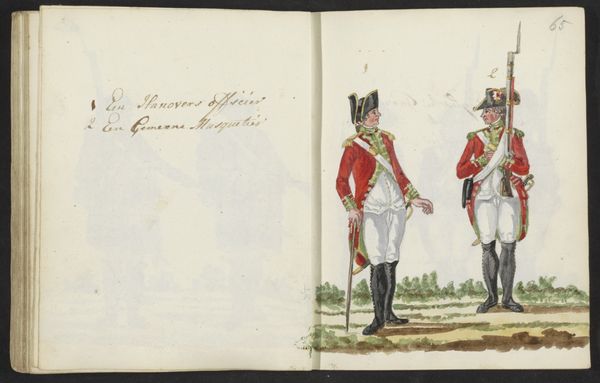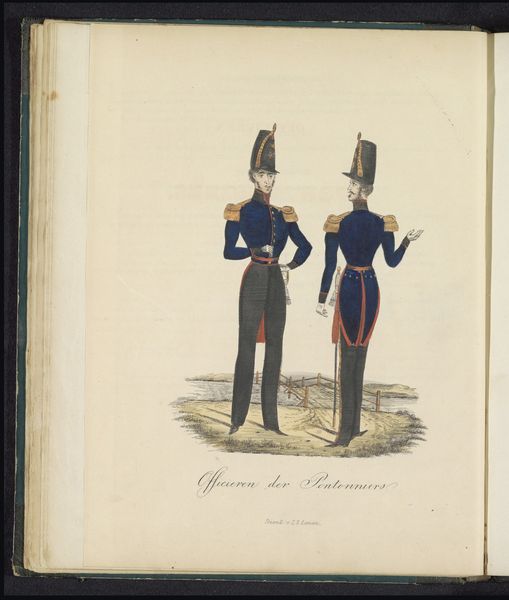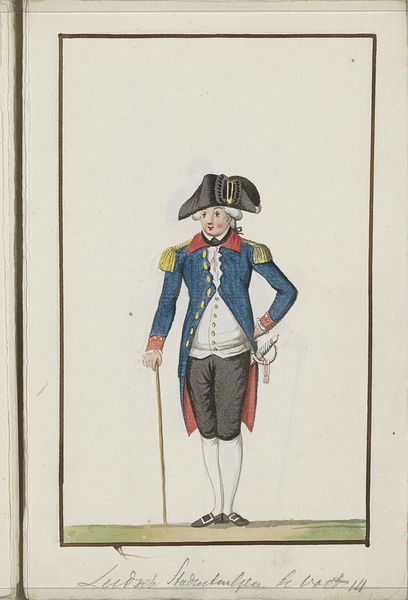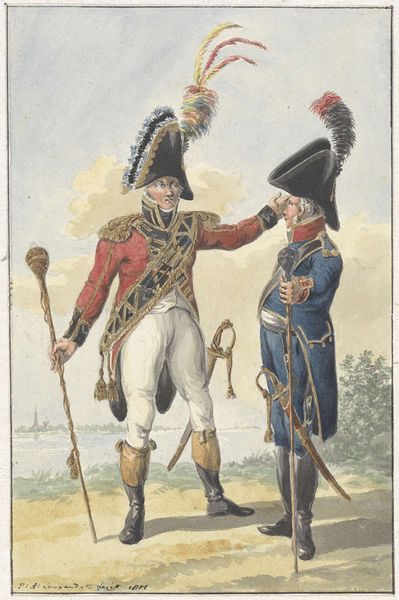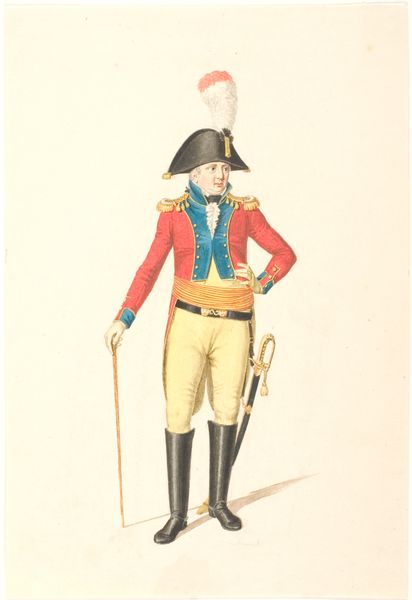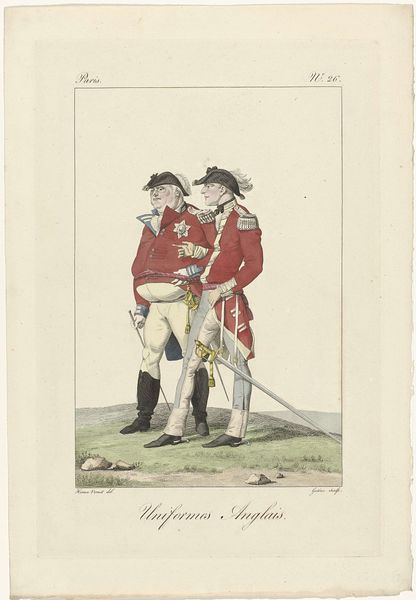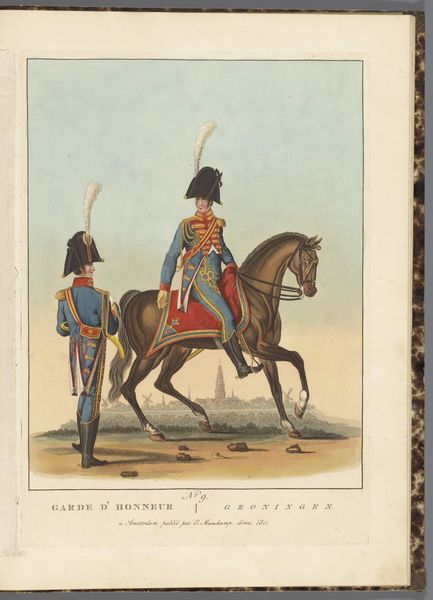
drawing, plein-air, watercolor
#
portrait
#
drawing
#
water colours
#
plein-air
#
watercolor
#
coloured pencil
#
romanticism
#
history-painting
#
miniature
#
watercolor
Dimensions: height 325 mm, width 230 mm
Copyright: Rijks Museum: Open Domain
Editor: Here we have "Erewacht te Delft, 1811," a watercolor drawing now at the Rijksmuseum. It depicts two guards in uniform. The crisp lines and flat planes almost make it feel more like a fashion plate than a historical scene. What strikes you most about this work? Curator: I'm interested in the context of its production. Watercolors in 1811 – what did that signify in terms of artistic training, accessibility of materials, and potential market? Was this watercolor made for mass consumption as a print, or a unique item made for a patron? Editor: That's a great question. I hadn't thought about the economic aspect. Does the choice of watercolor suggest it was perhaps less valued than, say, an oil painting during that period? Curator: Precisely! Watercolors were often associated with amateur practice or preparatory sketches. Consider the social status attached to various artistic mediums. Who had access to what, and how did that influence artistic hierarchies? Perhaps the thinness of the watercolor wash alludes to frugality given the tumultuous Napoleonic era. Editor: So, by analyzing the material—watercolor—we're actually uncovering insights into the broader societal conditions and the economics of art production at that time. What can the subject—soldiers in uniform—reveal? Curator: The choice to portray guards raises further questions about the relationship between art, power, and the military-industrial complex of the Napoleonic era. Uniforms themselves are fascinating objects – mass produced items designed to establish identity. Their very creation implicates global resource extraction and the organization of labour to weave and tailor cloth. Do the colorful touches on these otherwise somber uniforms also provide commentary, however muted, on conspicuous consumption? Editor: It’s incredible how much information is embedded in seemingly simple images! Thinking about the material conditions, from pigment to textile production, really opens up new ways of understanding this piece. Thanks so much! Curator: Indeed! Paying attention to these details pulls art from the realm of mere aesthetic appreciation into the very real world of labour, materiality, and power relations.
Comments
No comments
Be the first to comment and join the conversation on the ultimate creative platform.
